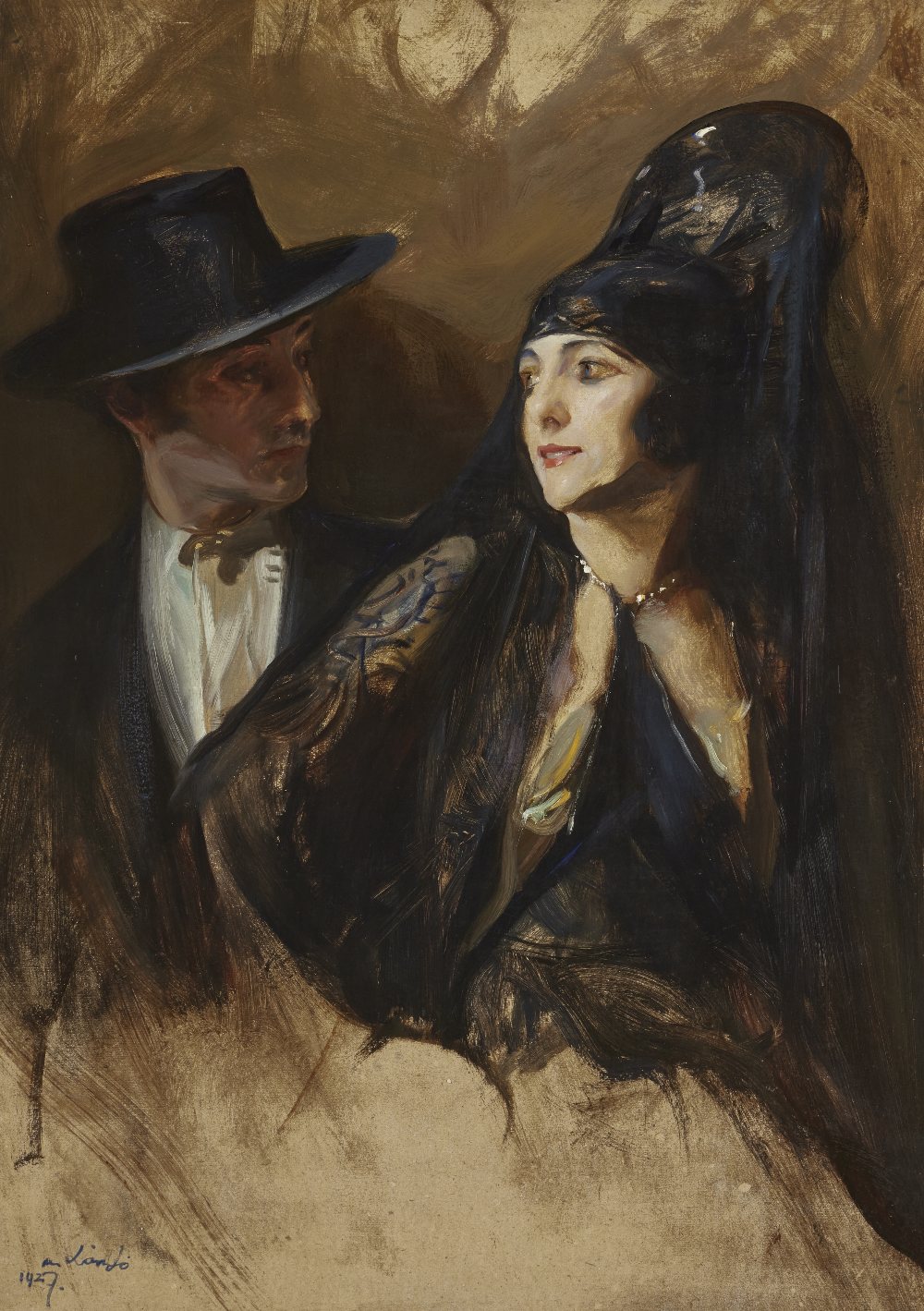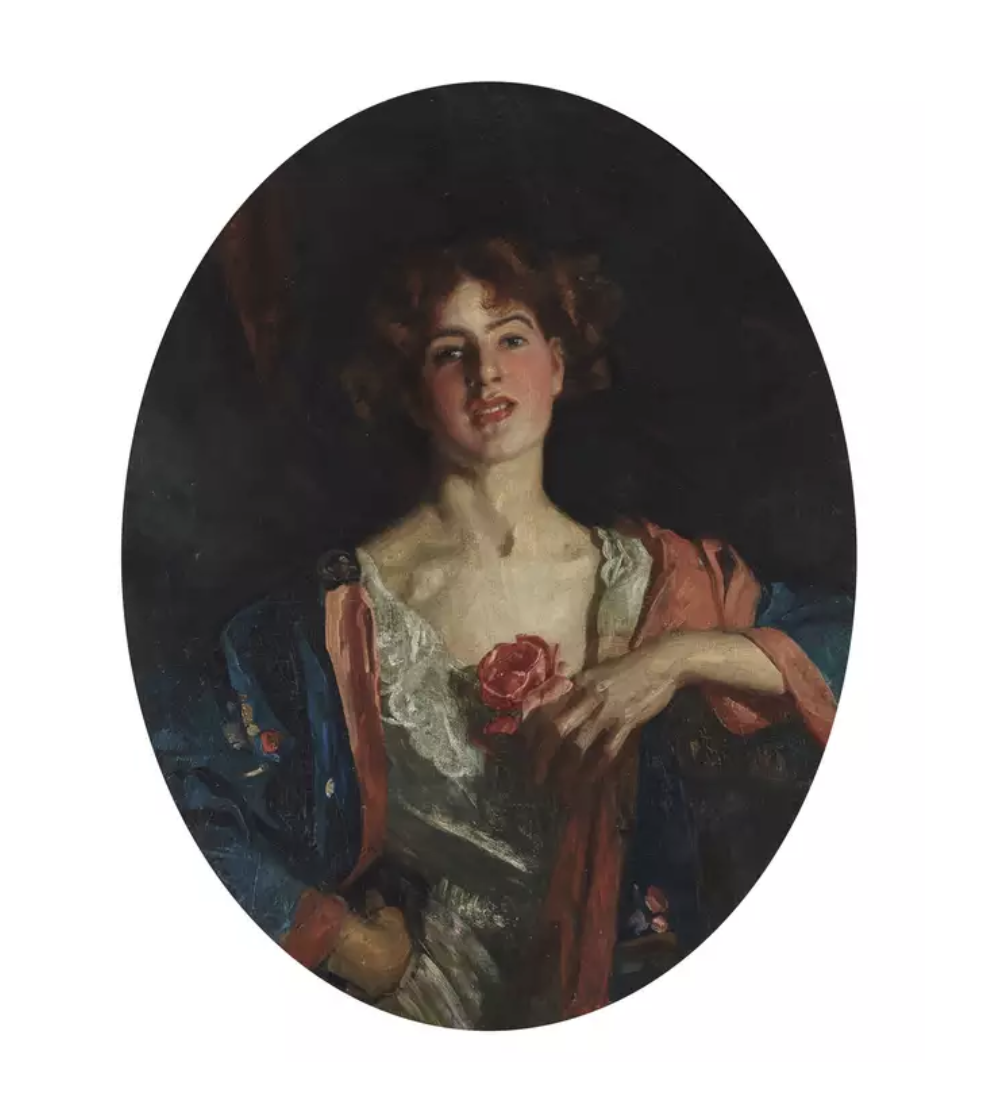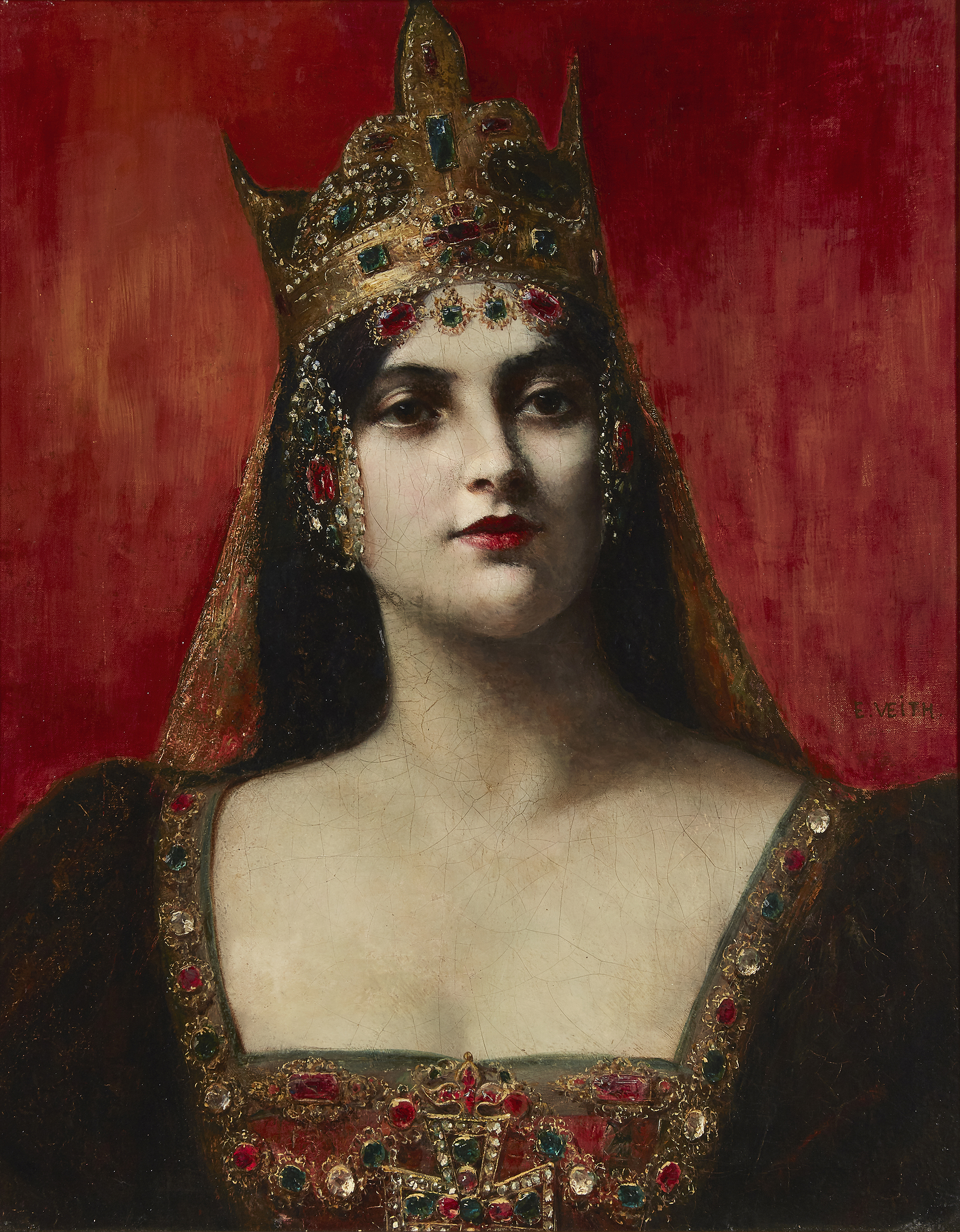Lot 235: Philip Alexius de László, PRBA, Hungarian / British 1869-1937- Spanish Dancers
Let’s contextualise the times
Before the invention of photography, portrait painting was the only way through which artists could capture and record the likeness of their subjects. From the mid-1800s, the advent of photography began to change the nature and function of portraiture. Many artists felt they no longer needed to accurately record their sitters’ likenesses as they could be more easily be achieved with a camera. This therefore allowed for greater experimentation and freedom both in the capturing of sitters’ features and also in the paintings’ ancillary or surrounding elements.
What are some of the British highlights in the sale?
Three beautiful and varied portraits by the Anglo-Hungarian artist Philip de László (lots 233-235) are undeniable highlights in the sale. They hail from different periods in his illustrious career and each represent different functions of portraiture. Two enigmatic portraits by Pre-Raphaelite artist Edward Robert Hughes also fall into this category (lot 226) as does a striking oval portrait by Maurice Greiffenhagen (lot 236).
Lot 236: Maurice William Greiffenhagen, RA, Portrait of Mrs Bury Barry holding a rose
What about their European counterparts? Are there any we should keep our eye on?
‘The Queen’ by Austrian artist Edouard Veith (lot 230) is definitely one to watch, as is the sensitively rendered portrait of a girl by French artist Édouard Cabane (lot 229). An anonymous portrait in the style of Sir John Lavery’s French portraits is also a particularly beautiful work (lot 231).
Lot 230: Eduard Veith, Austrian 1856-1925- The Queen
Is it easy to collect in this category with a modest budget?
Absolutely. In our upcoming sale, for example, we have three great picks with estimates under £500: lot 232 by French painter Léon Daviel; lot 347 by British artist Raymond Lynd; and a charming work on paper by Joseph Vincent Gibson (lot 212).







